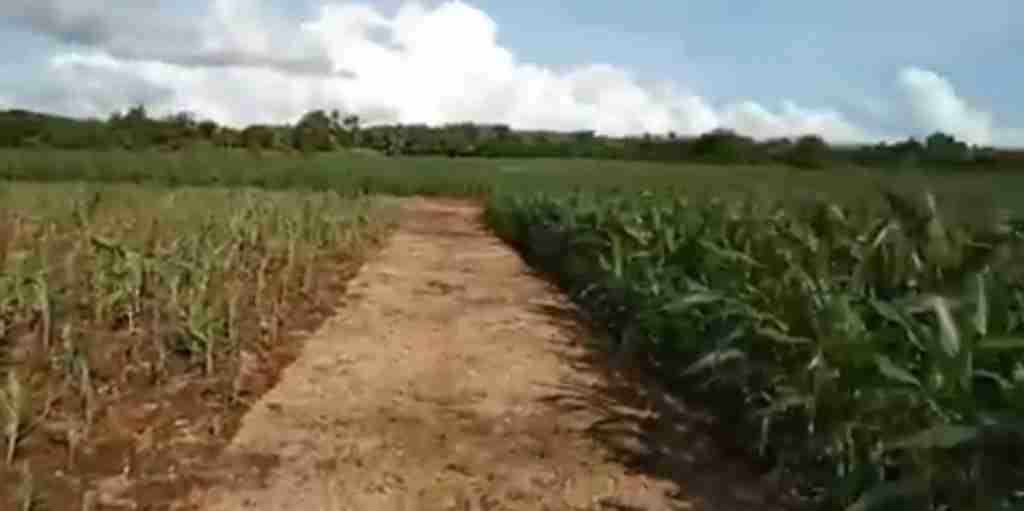They say a picture is worth 1,000 words.
A video of my farm on social media has attracted more than 50,000 views—and counting.
It uses the incredible power of images to convey a simple and important truth about the safety, effectiveness, and advantage of Bt corn.
 The video is from my mission farm in the Camotes Islands in the Philippines, where I grow mainly yellow corn on about 10 hectares. One of our goals is to show how technology can improve the lives of poor farmers. (Follow @World_Farmers on Twitter here.)
The video is from my mission farm in the Camotes Islands in the Philippines, where I grow mainly yellow corn on about 10 hectares. One of our goals is to show how technology can improve the lives of poor farmers. (Follow @World_Farmers on Twitter here.)
There will be no corn to harvest, as fall armyworm destroyed the plants.
That’s exactly what the video does. It presents a pair of cornfields, side by side. One of them has been devastated by the fall armyworm—a moth larvae with a voracious appetite. The corn plants have been chomped down to their stalks. They will produce nothing. From an agricultural standpoint, they are a total failure.
Corn will be harvested from these Bt corn plants, which have a defense mechanism protecting it from fall armyworm.
The field right next to it, however, is lush with corn plants. The green leaves are so thick that you can’t see the ground. This field will produce food. I’ll sell most of it and mill some into grits that my family will eat.
This was not a planned demonstration. Rather, it was a learning experience for my farming business partner who insisted on planting at least some non-Bt corn, even though I knew it would not be safe from the fall armyworm.
The difference between the two fields is technology. The non-GMO corn is naked and vulnerable to pests. In contrast, the Bt corn, improved by GMO technology, has a built-in defense mechanism that offers protection. It slows down the attack enough that we can manage to spray the corn with chemical control before it becomes out of hand.
Years ago, I was a GMO doubter. I thought these new kinds of crops were bad because I had very little knowledge about it and that’s what I heard other people claim. When I looked at the science and learned the truth about GMOs, however, I started to appreciate their potential. Then I planted them and saw how much they can help farmers.
Traditionally, farmers on my island have relied on an open-pollinated variety (OPV) of white flint corn that was brought here by the Spanish centuries ago and adapted to our climate. With OPV corn, a typical farmer here can yield 600 to 800 kg of corn per hectare.
This was enough to scrape by—but not much else. Our island is full of poor people, and one of the things keeping them poor is the never-ending struggle to achieve food security.
Those are impressive numbers, but they’re still numbers. The video reveals what the numbers actually mean. They don’t require you to solve a math problem. They just display the plain truth that GMO crops wildly outperform non-GMO crops.
This is the story of GMO adoption around the world. Farmers may hear that GMO crops are excellent at fighting pests and weeds, but they want to see the evidence with their own eyes. So, it always takes that first farmer who is willing to test an innovation. When neighbors see success, they want it for themselves.
On my island, unfortunately, many farmers resist even positive change. They like to do things the way they’ve always done them. This makes them resilient—a characteristic we needed in 2013 during the devastating Yolanda super typhoon—but it also can trap them in a cycle of poverty.
My goal is to help them break out of this trap. Our farm is always open to people who want to learn and geared towards demonstrating the advantages of adapting modern farming practices, including GMOs, as a way to increase productivity and income. I’m happy to give tours and share our story, including that fact that without this technology, I wouldn’t be able to keep on farming. It wouldn’t be economically possible.
 With the video, you don’t even have to visit my farm, at least not physically. You can check it out virtually, seeing how much we can gain when we take advantage of what proven science can offer agriculture.
With the video, you don’t even have to visit my farm, at least not physically. You can check it out virtually, seeing how much we can gain when we take advantage of what proven science can offer agriculture.
I’m hopeful that soon we’ll have more types of corn, including varieties developed from the new gene-editing technologies. We need these tools to defeat the fall armyworm, as well as to grow crops that fight drought and produce even stronger yields.
All of this is within our reach, even on a small island in the Philippines.
If you’re still not sure, just watch the video—because seeing is believing.
Click here to make a donation to the Global Farmer Network.

